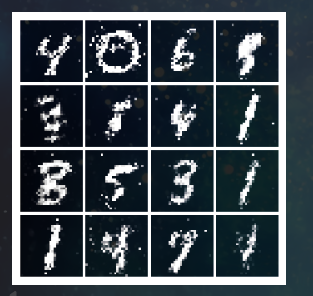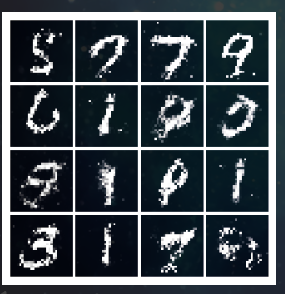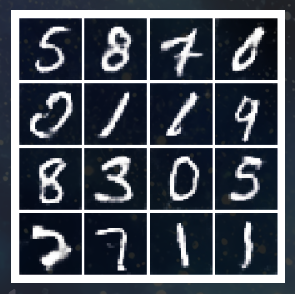StyleTransfer-PyTorch.ipynb
content_loss:
计算原始图像的特征图与生成图像的特征图之间的差距,公式:
def content_loss(content_weight, content_current, content_original):
"""
Compute the content loss for style transfer.
Inputs:
- content_weight: Scalar giving the weighting for the content loss.
- content_current: features of the current image; this is a PyTorch Tensor of shape
(1, C_l, H_l, W_l).
- content_target: features of the content image, Tensor with shape (1, C_l, H_l, W_l).
Returns:
- scalar content loss
"""
# *****START OF YOUR CODE (DO NOT DELETE/MODIFY THIS LINE)*****
scalar_content_loss = content_weight*torch.sum((content_current-content_original)**2)
# *****END OF YOUR CODE (DO NOT DELETE/MODIFY THIS LINE)*****
return scalar_content_loss
gram_matrix:
normalize:
除以HWC,除以HW是因为求和有这么多项,求平均值,除以C是对C取平均保证数值与通道数C无关
def gram_matrix(features, normalize=True):
"""
Compute the Gram matrix from features.
Inputs:
- features: PyTorch Tensor of shape (N, C, H, W) giving features for
a batch of N images.
- normalize: optional, whether to normalize the Gram matrix
If True, divide the Gram matrix by the number of neurons (H * W * C)
Returns:
- gram: PyTorch Tensor of shape (N, C, C) giving the
(optionally normalized) Gram matrices for the N input images.
"""
# *****START OF YOUR CODE (DO NOT DELETE/MODIFY THIS LINE)*****
N, C, H, W = features.shape
features = features.reshape(N, C, -1)
gram = torch.zeros((N, C, C))
for i in range(N):
gram[i] = torch.mm(features[i], features[i].t())
if normalize:
gram /= (H*W*C)
return gram
# *****END OF YOUR CODE (DO NOT DELETE/MODIFY THIS LINE)*****style_loss:
计算每一次层的current gram matrix 与 target gram matrix的loss之和
def style_loss(feats, style_layers, style_targets, style_weights):
"""
Computes the style loss at a set of layers.
Inputs:
- feats: list of the features at every layer of the current image, as produced by
the extract_features function.
- style_layers: List of layer indices into feats giving the layers to include in the
style loss.
- style_targets: List of the same length as style_layers, where style_targets[i] is
a PyTorch Tensor giving the Gram matrix of the source style image computed at
layer style_layers[i].
- style_weights: List of the same length as style_layers, where style_weights[i]
is a scalar giving the weight for the style loss at layer style_layers[i].
Returns:
- style_loss: A PyTorch Tensor holding a scalar giving the style loss.
"""
# Hint: you can do this with one for loop over the style layers, and should
# not be very much code (~5 lines). You will need to use your gram_matrix function.
# *****START OF YOUR CODE (DO NOT DELETE/MODIFY THIS LINE)*****
style_loss = 0
N_ = len(style_layers)
for i in range(N_):
G = gram_matrix(feats[style_layers[i]])
style_loss += style_weights[i] * torch.sum((G - style_targets[i])**2)
return style_loss
# *****END OF YOUR CODE (DO NOT DELETE/MODIFY THIS LINE)*****tv_loss:
为了增加生成图像的平滑性,我们使用Total-variation regularization来控制相邻像素之间的差异,用差的平方来衡量
def tv_loss(img, tv_weight):
"""
Compute total variation loss.
Inputs:
- img: PyTorch Variable of shape (1, 3, H, W) holding an input image.
- tv_weight: Scalar giving the weight w_t to use for the TV loss.
Returns:
- loss: PyTorch Variable holding a scalar giving the total variation loss
for img weighted by tv_weight.
"""
# Your implementation should be vectorized and not require any loops!
# *****START OF YOUR CODE (DO NOT DELETE/MODIFY THIS LINE)*****
h_shift = img[...,1:,:] - img[...,:-1,:] # 计算垂直方向相邻像素的差值
w_shift = img[...,1:] - img[...,:-1] # 水平方向
loss = tv_weight*(torch.sum(h_shift**2) + torch.sum(w_shift**2))
return loss
# *****END OF YOUR CODE (DO NOT DELETE/MODIFY THIS LINE)*****NetworkVisualization.ipynb
compute_saliency_maps:
计算得分关于X的梯度,在channel维度上取梯度最大值
def compute_saliency_maps(X, y, model):
"""
Compute a class saliency map using the model for images X and labels y.
Input:
- X: Input images; Tensor of shape (N, 3, H, W)
- y: Labels for X; LongTensor of shape (N,)
- model: A pretrained CNN that will be used to compute the saliency map.
Returns:
- saliency: A Tensor of shape (N, H, W) giving the saliency maps for the input
images.
"""
# Make sure the model is in "test" mode
model.eval() # 设置为评估模式
# Make input tensor require gradient
X.requires_grad_() # 让输入图像需要计算梯度
saliency = None
##############################################################################
# TODO: Implement this function. Perform a forward and backward pass through #
# the model to compute the gradient of the correct class score with respect #
# to each input image. You first want to compute the loss over the correct #
# scores (we'll combine losses across a batch by summing), and then compute #
# the gradients with a backward pass. #
##############################################################################
# *****START OF YOUR CODE (DO NOT DELETE/MODIFY THIS LINE)*****
scores = model(X) ## 通过模型得到分类得分
scores = (scores.gather(1, y.view(-1, 1)).squeeze()) # 提取正确类别的得分
grad = np.ones_like(scores.detach().numpy())
scores.backward(torch.from_numpy(grad)) # 反向传播求梯度
saliency, _ = torch.max(X.grad.data.abs(), dim=1) # 在channel维度取最大值
# *****END OF YOUR CODE (DO NOT DELETE/MODIFY THIS LINE)*****
##############################################################################
# END OF YOUR CODE #
##############################################################################
return saliencyquestion:
能否使用saliency_maps替代梯度进行梯度上升生成图像?
answer:
不能,因为saliency_map用的是channel维度上的最大值(取绝对值之后的),其丢失了channel维度信息以及梯度方向信息
make_fooling_image:
使用梯度上升,对原本预测标签为A的图像,将其生成为预测标签为B
def make_fooling_image(X, target_y, model):
"""
Generate a fooling image that is close to X, but that the model classifies
as target_y.
Inputs:
- X: Input image; Tensor of shape (1, 3, 224, 224)
- target_y: An integer in the range [0, 1000)
- model: A pretrained CNN
Returns:
- X_fooling: An image that is close to X, but that is classifed as target_y
by the model.
"""
# Initialize our fooling image to the input image, and make it require gradient
X_fooling = X.clone()
X_fooling = X_fooling.requires_grad_()
learning_rate = 1
##############################################################################
# TODO: Generate a fooling image X_fooling that the model will classify as #
# the class target_y. You should perform gradient ascent on the score of the #
# target class, stopping when the model is fooled. #
# When computing an update step, first normalize the gradient: #
# dX = learning_rate * g / ||g||_2 #
# #
# You should write a training loop. #
# #
# HINT: For most examples, you should be able to generate a fooling image #
# in fewer than 100 iterations of gradient ascent. #
# You can print your progress over iterations to check your algorithm. #
##############################################################################
# *****START OF YOUR CODE (DO NOT DELETE/MODIFY THIS LINE)*****
for i in range(100):
scores = model(X_fooling)
_, pred_y = scores.max(1)
if(pred_y==target_y):
print('Done in %d iterations'%(i))
break
scores[0,target_y].backward()
dX = learning_rate*X_fooling.grad.data/torch.norm(X_fooling.grad.data)
X_fooling.data += dX.data
X_fooling.grad.data.zero_()
# *****END OF YOUR CODE (DO NOT DELETE/MODIFY THIS LINE)*****
##############################################################################
# END OF YOUR CODE #
##############################################################################
return X_foolingcreate_class_visualization:
给定model,生成一张图片使得target_y的预测值最大
使用梯度上升即可,同时使用L2正则化
def create_class_visualization(target_y, model, dtype, **kwargs):
"""
Generate an image to maximize the score of target_y under a pretrained model.
Inputs:
- target_y: Integer in the range [0, 1000) giving the index of the class
- model: A pretrained CNN that will be used to generate the image
- dtype: Torch datatype to use for computations
Keyword arguments:
- l2_reg: Strength of L2 regularization on the image
- learning_rate: How big of a step to take
- num_iterations: How many iterations to use
- blur_every: How often to blur the image as an implicit regularizer
- max_jitter: How much to gjitter the image as an implicit regularizer
- show_every: How often to show the intermediate result
"""
model.type(dtype)
l2_reg = kwargs.pop('l2_reg', 1e-3)
learning_rate = kwargs.pop('learning_rate', 25)
num_iterations = kwargs.pop('num_iterations', 100)
blur_every = kwargs.pop('blur_every', 10)
max_jitter = kwargs.pop('max_jitter', 16)
show_every = kwargs.pop('show_every', 25)
# Randomly initialize the image as a PyTorch Tensor, and make it requires gradient.
img = torch.randn(1, 3, 224, 224).mul_(1.0).type(dtype).requires_grad_()
for t in range(num_iterations):
# Randomly jitter the image a bit; this gives slightly nicer results
ox, oy = random.randint(0, max_jitter), random.randint(0, max_jitter)
img.data.copy_(jitter(img.data, ox, oy))
########################################################################
# TODO: Use the model to compute the gradient of the score for the #
# class target_y with respect to the pixels of the image, and make a #
# gradient step on the image using the learning rate. Don't forget the #
# L2 regularization term! #
# Be very careful about the signs of elements in your code. #
########################################################################
# *****START OF YOUR CODE (DO NOT DELETE/MODIFY THIS LINE)*****
scores = model(img)
scores = scores[:,target_y] - (l2_reg * torch.norm(img))
scores.backward()
img.data += (learning_rate*img.grad.data/torch.norm(img.grad.data))
img.grad.data.zero_()
# *****END OF YOUR CODE (DO NOT DELETE/MODIFY THIS LINE)*****
########################################################################
# END OF YOUR CODE #
########################################################################
# Undo the random jitter
img.data.copy_(jitter(img.data, -ox, -oy))
# As regularizer, clamp and periodically blur the image
for c in range(3):
lo = float(-SQUEEZENET_MEAN[c] / SQUEEZENET_STD[c])
hi = float((1.0 - SQUEEZENET_MEAN[c]) / SQUEEZENET_STD[c])
img.data[:, c].clamp_(min=lo, max=hi)
if t % blur_every == 0:
blur_image(img.data, sigma=0.5)
# Periodically show the image
if t == 0 or (t + 1) % show_every == 0 or t == num_iterations - 1:
plt.imshow(deprocess(img.data.clone().cpu()))
class_name = class_names[target_y]
plt.title('%s\nIteration %d / %d' % (class_name, t + 1, num_iterations))
plt.gcf().set_size_inches(4, 4)
plt.axis('off')
plt.show()
return deprocess(img.data.cpu())Generative_Adversarial_Networks_PyTorch.ipynb
sample_noise:
生成指定size和范围的noise
def sample_noise(batch_size, dim):
"""
Generate a PyTorch Tensor of uniform random noise.
Input:
- batch_size: Integer giving the batch size of noise to generate.
- dim: Integer giving the dimension of noise to generate.
Output:
- A PyTorch Tensor of shape (batch_size, dim) containing uniform
random noise in the range (-1, 1).
"""
# *****START OF YOUR CODE (DO NOT DELETE/MODIFY THIS LINE)*****
return torch.rand(batch_size, dim) * 2 - 1
# *****END OF YOUR CODE (DO NOT DELETE/MODIFY THIS LINE)*****discriminator:
按照指示搭建网络即可
def discriminator():
"""
Build and return a PyTorch model implementing the architecture above.
"""
model = nn.Sequential(
# *****START OF YOUR CODE (DO NOT DELETE/MODIFY THIS LINE)*****
nn.Linear(784, 256),
nn.LeakyReLU(0.01),
nn.Linear(256,256),
nn.LeakyReLU(0.01),
nn.Linear(256,1)
# *****END OF YOUR CODE (DO NOT DELETE/MODIFY THIS LINE)*****
)
return modelgenerator:
同理
def generator(noise_dim=NOISE_DIM):
"""
Build and return a PyTorch model implementing the architecture above.
"""
model = nn.Sequential(
# *****START OF YOUR CODE (DO NOT DELETE/MODIFY THIS LINE)*****
nn.Linear(noise_dim,1024),
nn.ReLU(),
nn.Linear(1024,1024),
nn.ReLU(),
nn.Linear(1024, 784),
nn.Tanh()
# *****END OF YOUR CODE (DO NOT DELETE/MODIFY THIS LINE)*****
)
return modeldiscriminator_loss:
给定真样本和假样本的得分,希望计算discriminator的loss
上文已给出bce_loss的实现,即
则对于discriminator,其loss由两部分组成,分别是希望将真样本分到1产生的loss,和将假样本分到0产生的loss
def discriminator_loss(logits_real, logits_fake):
"""
Computes the discriminator loss described above.
Inputs:
- logits_real: PyTorch Tensor of shape (N,) giving scores for the real data.
- logits_fake: PyTorch Tensor of shape (N,) giving scores for the fake data.
Returns:
- loss: PyTorch Tensor containing (scalar) the loss for the discriminator.
"""
# 真实图像的标签为1,假图像的标签为0
real_labels = torch.ones_like(logits_real).type(dtype)
fake_labels = torch.zeros_like(logits_fake).type(dtype)
# 计算真实图像和假图像的BCE损失
loss_real = bce_loss(logits_real, real_labels)
loss_fake = bce_loss(logits_fake, fake_labels)
# 判别器总损失是两者之和
loss = loss_real + loss_fake
return lossgenerator_loss:
给定假样本的得分,计算generator的loss
其loss为希望将假样本分到1所产生的loss
def generator_loss(logits_fake):
"""
Computes the generator loss described above.
Inputs:
- logits_fake: PyTorch Tensor of shape (N,) giving scores for the fake data.
Returns:
- loss: PyTorch Tensor containing the (scalar) loss for the generator.
"""
# 生成器希望判别器将假图像分类为真实图像(标签为1)
fake_labels = torch.ones_like(logits_fake).type(dtype)
# 计算生成器损失
loss = bce_loss(logits_fake, fake_labels)
return lossget_optimizer:
根据给定model,返回其对应的给定超参的optimizer
def get_optimizer(model):
"""
Construct and return an Adam optimizer for the model with learning rate 1e-3,
beta1=0.5, and beta2=0.999.
Input:
- model: A PyTorch model that we want to optimize.
Returns:
- An Adam optimizer for the model with the desired hyperparameters.
"""
optimizer = None
optimizer = optim.Adam(model.parameters(), lr=1e-3, betas=(0.5, 0.999))
return optimizer迭代3000轮后的GAN:

Least Squares GAN:
使用MSE loss来代替cross entropy loss
即:
def ls_discriminator_loss(scores_real, scores_fake):
"""
Compute the Least-Squares GAN loss for the discriminator.
Inputs:
- scores_real: PyTorch Tensor of shape (N,) giving scores for the real data.
- scores_fake: PyTorch Tensor of shape (N,) giving scores for the fake data.
Outputs:
- loss: A PyTorch Tensor containing the loss.
"""
loss = None
# *****START OF YOUR CODE (DO NOT DELETE/MODIFY THIS LINE)*****
loss = 0.5 * (torch.mean((scores_real - 1) ** 2) + torch.mean(scores_fake ** 2))
# *****END OF YOUR CODE (DO NOT DELETE/MODIFY THIS LINE)*****
return loss
def ls_generator_loss(scores_fake):
"""
Computes the Least-Squares GAN loss for the generator.
Inputs:
- scores_fake: PyTorch Tensor of shape (N,) giving scores for the fake data.
Outputs:
- loss: A PyTorch Tensor containing the loss.
"""
loss = None
loss = 0.5*torch.mean((scores_fake - 1) ** 2)
return loss迭代3750轮后的LSGAN:

Deeply Convolutional GAN:
上文的建模GAN使用的都是FC层,缺少对空间信息的处理,因此我们这里选用CNN建模
def build_dc_classifier():
"""
Build and return a PyTorch model for the DCGAN discriminator implementing
the architecture above.
"""
return nn.Sequential(
# *****START OF YOUR CODE (DO NOT DELETE/MODIFY THIS LINE)*****
Unflatten(N=-1, C=1, H=28, W=28), # 将784维向量重塑为1×28×28图像
nn.Conv2d(1, 32, 5, 1),
nn.LeakyReLU(0.01),
nn.MaxPool2d(2, 2),
nn.Conv2d(32, 64, 5, 1),
nn.LeakyReLU(0.01),
nn.MaxPool2d(2, 2),
Flatten(),
nn.Linear(1024, 1024),
nn.LeakyReLU(0.01),
nn.Linear(1024, 1),
# *****END OF YOUR CODE (DO NOT DELETE/MODIFY THIS LINE)*****
)
data = next(enumerate(loader_train))[-1][0].type(dtype)
b = build_dc_classifier().type(dtype)
out = b(data)
print(out.size())def build_dc_generator(noise_dim=NOISE_DIM):
"""
Build and return a PyTorch model implementing the DCGAN generator using
the architecture described above.
"""
return nn.Sequential(
# *****START OF YOUR CODE (DO NOT DELETE/MODIFY THIS LINE)*****
nn.Linear(noise_dim, 1024),
nn.ReLU(),
nn.BatchNorm1d(1024),
nn.Linear(1024, 128 * 7 * 7),
nn.ReLU(),
nn.BatchNorm1d(128*7*7),
Unflatten(N=-1,C=128,H=7,W=7),
nn.ConvTranspose2d(128, 64, 4, 2, 1), #反卷积,上采样
nn.ReLU(),
nn.BatchNorm2d(64),
nn.ConvTranspose2d(64,1,4,2,1),
nn.Tanh(),
Flatten(),
# *****END OF YOUR CODE (DO NOT DELETE/MODIFY THIS LINE)*****
)
test_g_gan = build_dc_generator().type(dtype)
test_g_gan.apply(initialize_weights)
fake_seed = torch.randn(batch_size, NOISE_DIM).type(dtype)
fake_images = test_g_gan.forward(fake_seed)
fake_images.size()迭代1250轮的效果:

QUESTION:
对于GAN的交替梯度更新目标函数,会导致不稳定的震荡动态行为,这就是GAN难以训练的根本原因
其次,discriminator的loss恒高,而generator的loss下降,这并不是一件好事,因为这表明discriminator训练失败,无法有效区分真假图像,从而导致generator无法进一步学习,导致模式崩塌